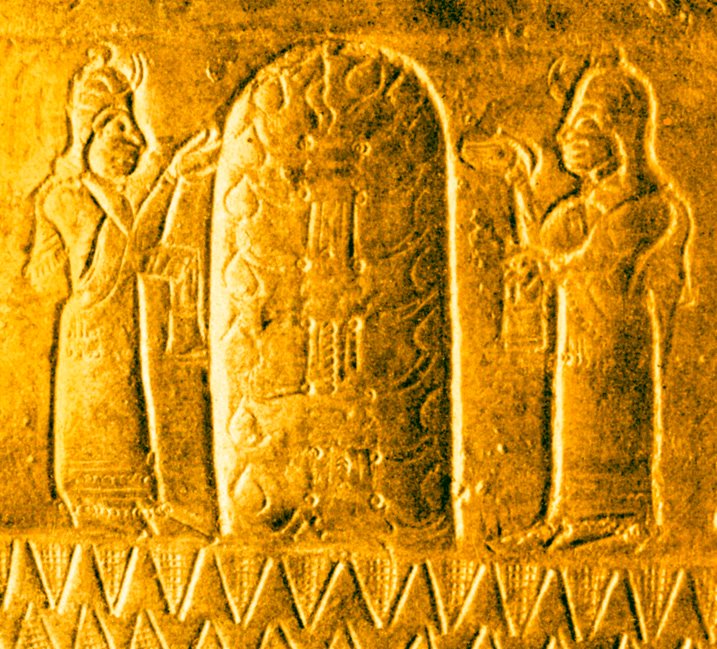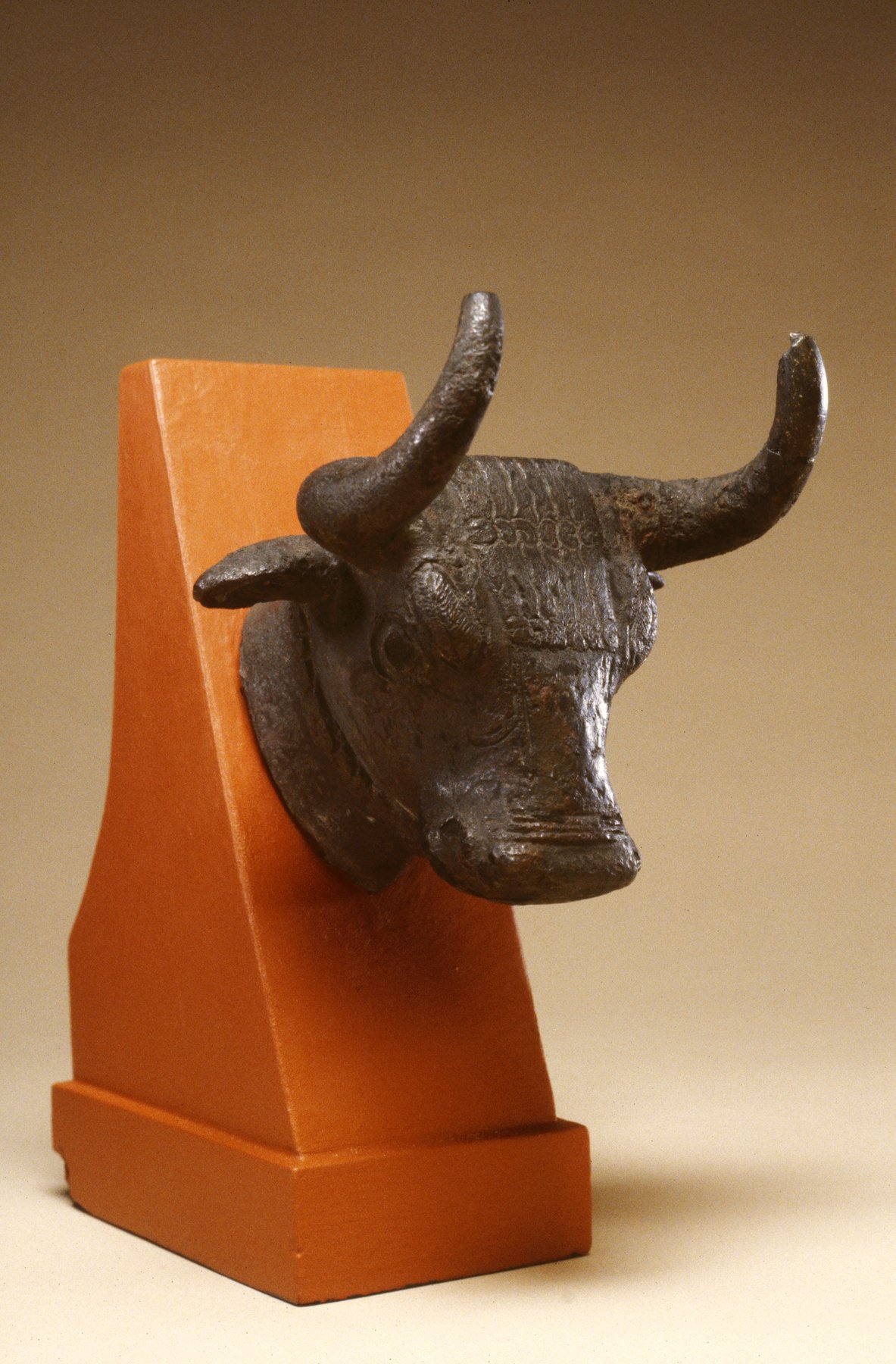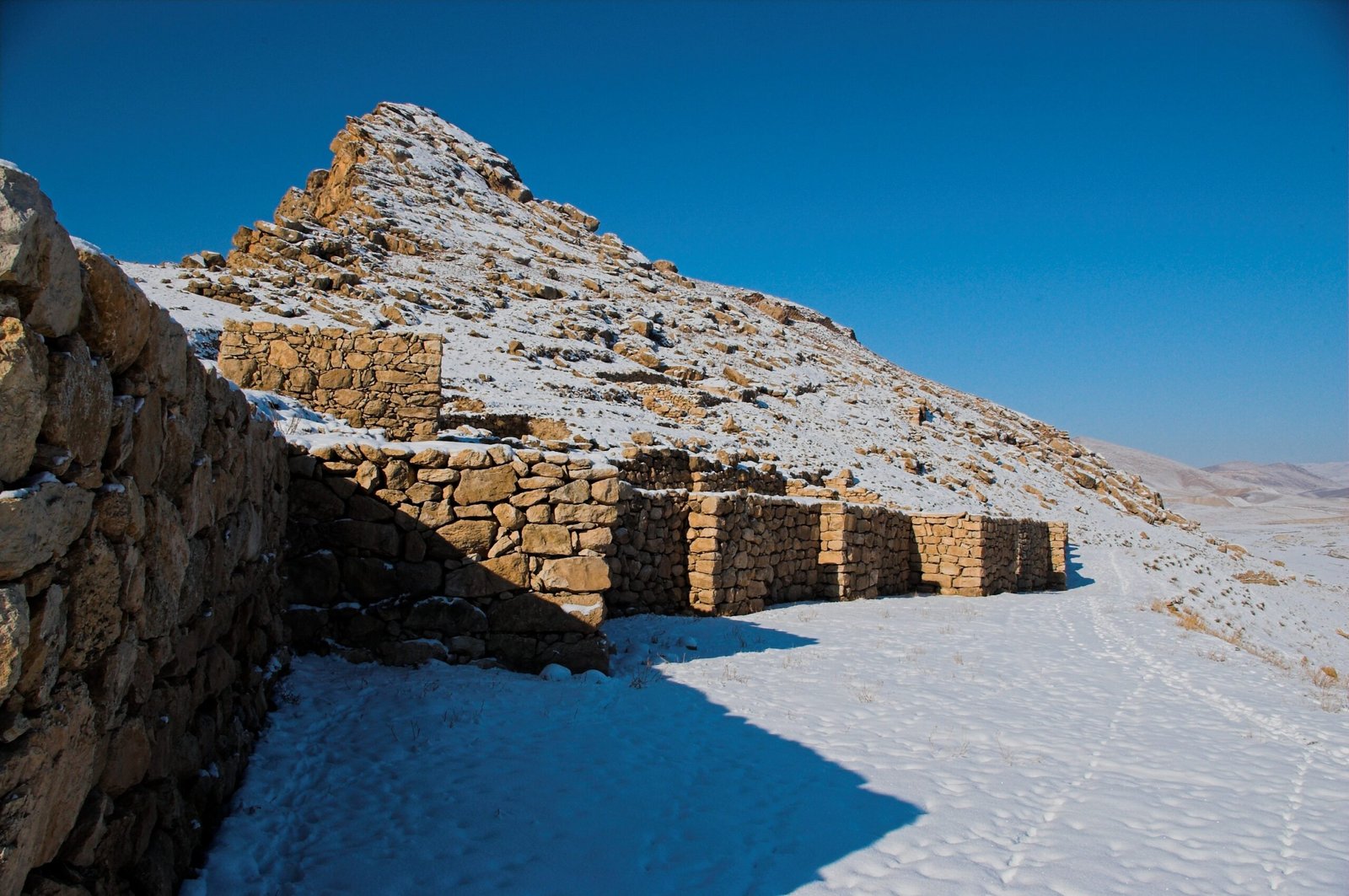The Ancient Urartu Civilization
The Urartu civilization, also known as the Kingdom of Urartu, was a powerful ancient kingdom that thrived in the region of present-day Armenia, eastern Turkey, and northwest Iran from the 9th century BCE to the 6th century BCE. Despite being overshadowed by other ancient civilizations such as the Assyrians and Babylonians, the Urartu civilization left a significant impact on the history and culture of the region. One of the most important cities in the Urartian kingdom was Tushpa, which served as the capital and a hub of political, economic, and cultural activities. Unveiling the complexities of the Assyrian relationship with the Urartu civilization provides a fascinating insight into the dynamics of ancient geopolitics.

The Rise and Fall of the Urartu Empire
The Urartu Empire experienced a remarkable rise to power around the 9th century BCE under the leadership of King Aramu. Over the centuries, the empire expanded its territories, reaching its peak under King Sarduri II in the 8th century BCE. The Urartu Empire was known for its strong military, advanced infrastructure, and innovative irrigation systems. However, the empire faced external pressures from the expanding Assyrian Empire, leading to its gradual decline. By the 6th century BCE, the Urartu Empire was brought to an end, leaving behind a rich cultural legacy.
Exploring the City of Tushpa: Urartu’s Capital
Tushpa, also known as Van, was the capital city of the Urartu civilization. Located on the eastern shore of Lake Van, Tushpa was strategically positioned to control trade routes and serve as a cultural center. The city was adorned with magnificent fortresses, temples, and palaces, displaying the architectural prowess of the Urartian civilization. Excavations have revealed the existence of a vast citadel, residential areas, and an extensive system of defensive walls, showcasing the urban planning and engineering skills of the Urartu people.
The Origins and Ethnicity of the Urartu People
The origins of the Urartu people remain a subject of debate among historians and archaeologists. Some theories suggest that they were indigenous to the region, while others propose that they were part of a larger Indo-European migration. Regardless of their origins, the Urartu people developed a unique culture and language, which was distinct from their neighboring civilizations. The Urartian language, written in cuneiform script, has provided valuable insights into their society, religion, and administration.
The Role of Tushpa in the Assyrian-Urartian Relations
The relationship between the Assyrians and the Urartu civilization was complex and characterized by periods of cooperation and conflict. Tushpa played a crucial role in this dynamic, serving as a strategic border city between the two powers. The city witnessed numerous military campaigns and political alliances between the two civilizations, as they vied for dominance in the region. Tushpa’s location made it a coveted prize for both the Assyrians and the Urartu rulers, resulting in frequent power struggles and territorial disputes.
Nestled in the eastern region of modern-day Turkey lies the ancient city of Tushpa, a historical gem waiting to be discovered. With its origins dating back to the early Iron Age, Tushpa offers a fascinating glimpse into the rich history and culture of an ancient civilization. As archaeologists continue to unearth its secrets, Tushpa stands as a captivating window into the past, allowing us to understand the lives and traditions of those who once thrived within its walls.
Tushpa, also known as Toprakkale, was the capital city of the Urartian Kingdom, an ancient civilization that flourished from the 9th to the 6th century BCE. Located strategically on the shores of Lake Van, Tushpa served as the political, economic, and cultural center of the kingdom. The city’s impressive fortifications, including massive walls and defensive towers, stand as a testament to its importance as a stronghold against external threats.
Excavations at Tushpa have revealed a rich array of artifacts, providing valuable insights into the daily life of its inhabitants. The discovery of intricate pottery, jewelry, and tools has shed light on the skilled craftsmanship of the Urartians. Intriguingly, many of these artifacts depict scenes from religious rituals and war, offering a glimpse into the spiritual and militaristic aspects of the civilization. As archaeologists continue to explore Tushpa, the city’s ancient streets, palaces, and temples are gradually being pieced together, painting a comprehensive picture of this once-thriving civilization.
Tushpa’s history is intricately linked to the rise and fall of the Urartian Kingdom. As one of the most powerful kingdoms of its time, Urartu controlled vast territories, stretching from modern-day eastern Turkey to parts of Iran, Armenia, and even northern Iraq. Tushpa played a crucial role in this kingdom, acting as a bustling hub of trade and political power.
The city’s architecture showcases the artistic and engineering prowess of the Urartians. The grandeur of the royal palaces, such as the impressive Temple of Haldi, dedicated to the chief deity of the kingdom, reflects the wealth and sophistication of Tushpa. Additionally, the discovery of extensive water management systems, including impressive canals and reservoirs, highlights the advanced engineering knowledge possessed by the ancient inhabitants of Tushpa.
As our knowledge of Tushpa continues to grow, the ancient city remains a captivating archaeological site, attracting researchers, historians, and curious visitors from around the world. Through the ongoing exploration and preservation efforts, Tushpa’s rich history can be shared and appreciated by future generations. The uncovering of its artifacts and remnants of ancient structures not only offers a fascinating glimpse into the past but also contributes to our understanding of the complex civilizations that once thrived in this region. Tushpa truly stands as a window into a bygone era, allowing us to marvel at the achievements and aspirations of a people long gone, but not forgotten.
Trade and Economic Interactions in Tushpa
Tushpa was a thriving economic center, serving as a gateway for trade between the Urartu civilization and its neighboring regions. The city was strategically located along the Silk Road, a major trade route connecting the East and the West. Tushpa’s position allowed it to benefit from the exchange of goods and ideas, contributing to the city’s prosperity. Excavations have revealed evidence of trade goods, such as ceramics, metalwork, and precious stones, highlighting the economic significance of Tushpa in the ancient world.
Political Alliances and Conflicts
The political landscape of ancient Mesopotamia and Anatolia was marked by shifting alliances and conflicts, and Tushpa was at the center of these complexities. The Urartu rulers forged alliances with various regional powers, including the Assyrians, to protect their interests and maintain their independence. However, these alliances were often short-lived, as power dynamics and territorial disputes led to conflicts. The city of Tushpa witnessed the rise and fall of different political alliances, reshaping the course of history in the region.
Tushpa as a Cultural and Religious Center
Tushpa was not only a political and economic hub but also a center of culture and religion. The city was home to magnificent temples and sanctuaries dedicated to various deities, reflecting the religious beliefs and practices of the Urartu people. Excavations in Tushpa have unearthed exquisite artifacts, including statues, altars, and ritual objects, providing valuable insights into the religious life of the Urartu civilization. Tushpa’s cultural and religious significance extended beyond its borders, influencing neighboring civilizations and leaving a lasting impact on the region.
Architecture and Urban Planning in Tushpa
The architectural achievements of the Urartu civilization are evident in the city of Tushpa. The city’s fortresses and citadels were constructed with massive stone blocks, displaying the ingenuity and sophistication of Urartian architecture. The strategic placement of defensive walls and the intricate design of buildings showcased the advanced urban planning skills of the Urartu people. Tushpa’s architecture combined both practicality and aesthetics, creating a unique urban landscape that continues to captivate historians and archaeologists.

Art and Craftsmanship in the Urartu Civilization
The Urartu civilization was renowned for its artistic and craft traditions, as evidenced by the numerous artifacts discovered in Tushpa. The Urartians excelled in metalworking, producing intricate bronze and iron objects, such as weapons, jewelry, and household items. The craftsmanship displayed in these artifacts highlights the technical expertise and artistic sensibilities of the Urartu artisans. The city of Tushpa was a center for skilled craftsmen, contributing to the flourishing artistic culture of the Urartu civilization.
Discoveries and Excavations in Tushpa
Archaeological excavations in Tushpa have provided invaluable insights into the Urartu civilization and its capital city. Over the years, numerous discoveries have been made, including monumental inscriptions, clay tablets, and architectural remains, shedding light on various aspects of Urartu life. The excavations have not only enhanced our understanding of the material culture and history of the Urartu civilization but also deepened our knowledge of the ancient world and its interconnected civilizations.

Bastam, a small village nestled in the stunning Mountains of Northwestern Iran, has recently gained attention for its enigmatic ruins. Hidden among the lush greenery and picturesque landscapes, Bastam is home to an ancient Urartian Citadel that has captivated archeologists and history enthusiasts alike. This magnificent site offers a glimpse into the rich history of the Urartian civilization, a mysterious culture that flourished thousands of years ago. Let us embark on a journey to unveil the secrets of Bastam and trace the footsteps of this fascinating civilization.
The Enigmatic Ruins of Bastam
As you wander through the ruins of Bastam, it is impossible not to be awestruck by the sheer grandeur and mystery that surrounds this ancient site. The citadel, with its towering walls and intricate architecture, stands as a silent testimony to the glory of the past. The remains of palaces, temples, and fortifications leave visitors in awe, imagining what life was like for the Urartian people who once called this place home.
Archaeological excavations have revealed fascinating artifacts, including pottery, jewelry, and weapons, shedding light on the daily lives and cultural practices of the Urartians. The unique architectural style of the citadel, characterized by massive stone blocks and ingenious engineering techniques, showcases the advanced knowledge and skills of the ancient builders. As experts continue to explore and study the ruins, more intriguing discoveries are sure to come to light, unraveling the mysteries of this ancient civilization.
Tracing the Footsteps of Urartian Civilization
The Urartian civilization, also known as the Kingdom of Urartu, thrived in the region between the 9th and 6th centuries BCE. Their empire stretched across present-day Armenia, Iran, and Turkey, with Bastam serving as a vital stronghold and administrative center. The citadel of Bastam played a crucial role in their military and political strategies, providing a strategic vantage point to oversee the surrounding territory.
The Urartians were renowned for their skilled craftsmanship in metalwork, pottery, and jewelry. Their artistic achievements, as seen in the intricately designed objects discovered in Bastam and other Urartian sites, reflect a highly advanced culture. The empire’s decline is shrouded in mystery, with theories ranging from conflicts with neighboring kingdoms to natural disasters. As we explore the ruins of Bastam, we can’t help but marvel at the ingenuity and cultural richness that once flourished within its walls.
Bastam, with its ancient Urartian Citadel, stands as a reminder of the impressive achievements and cultural legacy of the Urartian civilization. The ruins in this idyllic village offer a window into a civilization that has largely remained a mystery to us. As we continue to uncover and study the artifacts and structures left behind, we inch closer to understanding the complex and intriguing history of the Urartians. Bastam is a true treasure, inviting us to delve into the mysteries of the past and appreciate the wonders that ancient civilizations have left for us to discover.
Legacy and Influence of the Urartu Civilization
The legacy of the Urartu civilization can be seen in the region’s cultural and historical heritage. The Urartian influence extended beyond their empire’s borders, impacting neighboring civilizations such as the Assyrians and the Persians. The architectural and artistic achievements of the Urartu civilization continue to inspire contemporary artists and architects. Furthermore, the study of the Urartu civilization and its capital city of Tushpa has provided crucial insights into the complexities of ancient geopolitics and the dynamics of intercultural relations.
The Urartu civilization in Tushpa offers a glimpse into the rich history and cultural heritage of the region. The rise and fall of the Urartu Empire, the complexities of Assyrian-Urartian relations, the flourishing economic and trade interactions, and the architectural and artistic achievements in Tushpa all contribute to our understanding of the ancient world. The ongoing excavations and discoveries in Tushpa continue to unravel the mysteries of this enigmatic civilization, revealing its significance and impact on the development of human civilization. The Urartu civilization stands as a testament to the enduring spirit of human innovation and creativity.
